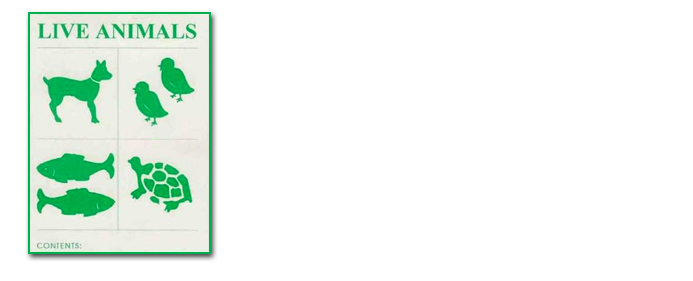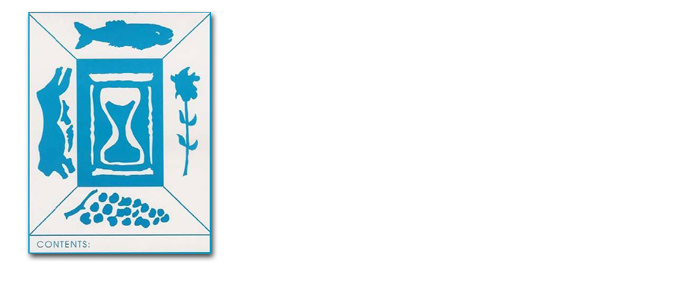
Special cargo means cargo which requires special procedures for acceptance, handling and loading. The main types of special cargo are:
• Dangerous Goods
• Fragile Cargo
• Heavy/Outsized Cargo
• Human Remains
• Live Animals
• Magnetized Materials
• Perishable Cargo
• Valuable and Vulnerable Cargo
• Wet Cargo
Dangerous goods are articles and substances that are capable of posing a significant risk to health, safety or property. They can be carried by air when the risk they pose is reduced to an acceptable level by limiting the quantity per package, and by packing in such a manner that the package will not fail during normal transit. Dangerous goods are classified according to the danger to which they give rise. A hazard class identifies each particular type of danger. There are nine hazard classes, some of which are further divided into divisions. A summary of the classes and divisions is as follows:
Class 1: Explosives

Division
1.1 Articles and substances with a mass explosion hazard
1.2 Articles and substances with a projection hazard
1.3 Articles and substances with a fire or minor blast hazard
1.4 Articles and substances with no significant hazard
1.5 Very insensitive substances which have a mass explosion hazard
1.6 Extremely insensitive substances which do not have a mass explosive hazard
Class 2: Compressed Gases

Division
2.1 Flammable gas
2.2 Non-flammable gas
2.3 Toxic gas
Class 3: Flammable Liquids

Class 4: Flammable Solids

Division
4.1 Flammable solids
4.2 Spontaneously combustible
4.3 Dangerous when wet
Class 5: Oxidizing substances and Organic Peroxides

Division
5.1 Oxidizing substances
5.2 Organic Peroxides
Class 6: Toxic and Infectious Substances

Division
6.1 Toxic substances
6.2 Infectious substances
Class 7: Radioactive Materials

Class 8: Corrosive Materials

Class 9: Miscellaneous Dangerous Goods

Dangerous goods are not acceptable unless the shipper has certified that all the shipment complies fully with the applicable dangerous goods regulations. All articles must be declared on a form entitled 'Shipper's Declaration for Dangerous Goods'.

Fragile cargo are items which may easily be damaged, if exposed to jolting, dropping, bumping or rough handling during transportation. Typical fragile commodities are antiques, works of art, chinaware, glassware, earthenware, cast-iron articles, TV and radio tubes, sculptures, etc.
There are 4 types of fragile cargo :
1. Solid items i.e. glassware, chinaware, TV tubes
2. Solid items containing normal liquids i.e. bottles of shampoo
3. Solid items containing dangerous liquids i.e. bottles of alcohol, paints, perfumes
4. Bulky and easily damaged aircraft components i.e. flaps, ailerons and elevators.
Fragile cargo shall be accepted only if securely packed in containers made of solid material such as wooden cases, preferably new ones. If the container is breakable, e.g. glass, it should be surrounded by enough absorbent material to absorb any liquid in the container, should it be broken. Make sure that each package is marked with the 'Fragile' and 'This Side Up' labels. If any special handling and/or stowing is required, this must be indicated on the package as well as on the air waybill.
HEAVY / OUTSIZED CARGO (HEA / BIG)
Heavy Cargo is defined as items of weights and/or dimensions exceeding limits. Outsized cargo is defined as individual cargo items of a size/weight that does not allow it to be loaded in the lower compartments or on one pallet. For both heavy and outsized cargo, the 3-letter code "BIG" shall be printed in the handling information box of the air waybill. Outsized cargo will normally demand certain special arrangements to be made with regard to ground equipment, loading/unloading procedures and ground stops. The extent of such arrangements depends on the shape and weight of the cargo item to be carried. Therefore the acceptance of outsized cargo is subject to prior approval. Similarly transportation of heavy cargo often involves special loading arrangements, space for such shipments shall always be requested in advance.
Human corpses may only be accepted for carriage provided they are accompanied by a Death Certificate issued by the appropriate authorities in the country of death. All laws, ordinances or governmental rules and regulations in the country of departure, transit and destination regarding carriage of human remains must be complied with. As the stated rules are generally complicated and subject to frequent revisions, shippers can obtain all advice from the appropriate authorities involved.
Uncremated human remains must be contained in a soldered inner coffin of lead or zinc, which is inside a wooden one to prevent damage, and covered by canvas so that the nature of contents is not apparent. Cremated human remains must be shipped as funeral urns that are efficiently protected against breakage by cushioning packing. An additional Cremation Certificate from the crematorium is required.

The acceptance of live animal consignments is subject to the conditions as described in the IATA's Live Animals Regulations and to TG's Regulations which are closely related to the type of animals, type of aircraft, temperature at origin, en-route and destination, and availability of animal attendant. The conditions applicable to acceptance of live animals are as follows:
a) Health and condition of animals: Animals in a consignment must not show any sign of illness. They must be well fed and watered. The carriage of animals in an advanced state of pregnancy is generally prohibited.
b) Packing: Packing must be clean, leak-proof and escape-proof to allow safe handling during carriage. A special "Live Animals" label shall be affixed with the handling instructions completed.
c) Food and additional articles: Additional articles such as food accompanying the shipment must be included in the chargeable weight and if being shipped as separate pieces, marked as forming part of the shipment.
d) Reservations: Confirmation must have been received of reserved space on flights and possible connecting flight(s) of other airlines up to the airport of destination.
e) Consolidation: Live animals may not be consolidated with other goods but a consolidated shipment may be wholly composed of live animals.
f) Documents: Health documents and Shipper's Certification for Live Animals are generally required for every shipment of live animals.
A live animal shipment at a lower standard than those described in the IATA Live Animals Regulations is not acceptable.

Magnetized material is any material that exerts a magnetic force and has the property to attract or repel other articles, particularly metals. Manufacturers of electronic and magnetic instruments may sometimes quote the "Compass Safe Distance" of their goods on the package.

Perishable cargo are items subject to decay, deterioration or decomposition. Typical commodities in this category are chocolate, greens, dairy products, meat, deep frozen products, fish, plants, flower bulbs, serum, vaccine, fruits and vegetables. Perishables shall be accepted without any responsibility for any loss or damage due to changes in climate, temperature, altitude or other ordinary exposures. Shipments of perishables must be prearranged and booked all the way through to final destination. If any special handling and/or stowing is required, this must be indicated on the air waybill and a small Attention label should be affixed. Furthermore, each separate package shall be marked with a Perishable and This Side Up label. Also the code PER must be printed in the handling information box of the air waybill.
Valuables are shipments having a declared value for carriage (DVC) of USD1000 (or equivalent) or more per gross kilogram, or which contains one or more of the following commodities:
1. Any piece of gold or platinum and articles made of gold or platinum
2. Legal bank notes, securities, shares, traveller's cheques, stamps and ready-for-use bank cards and credit cards.
3. Precious stones: diamonds (including diamonds for industrial use), rubies, emeralds, sapphires, opals and real pearls (including cultured pearls).
4. Jewelry consisting of any of the articles under 3
5. Jewelry and watches made of silver and/or gold and/or platinum.
Valuable shipments shall be given special care all the way through the destination. No shipment of valuable goods is permitted to proceed unless booking has been confirmed en-route. The carriage of VAL should be on a direct flight from departure to destination or at the lowest transfer points. VAL code must be printed in the "Handling Information" box of the air waybill. The packaging must be sufficiently strong to prevent damage caused by the normal handling. Cardboard cartons are not allowed for packaging. Each package must be sealed or steel-banded before acceptance.
VULNERABLE CARGO (VUN)
Vulnerable cargo are goods which are extremely liable to be stolen and are readily marketable such as cameras, watches, souvenirs, television sets, radio sets, semi-precious stones. Vulnerable cargo will be stored, where possible, in strong rooms, or in an area where the shipment can be kept under constant surveillance.
The following shipments are usually identified as wet cargo:
• Marine and fresh water products which incorporate salt water, ice and fresh water
.
• Shellfish
• Products which contain water or fluids, such as vegetables, frozen or salted casings/seafood
During air transportation, all loaded items are affected by changes of temperature, humidity, pressure and vibration. Under these conditions, wet cargo may spill or leak, which could lead to corrosion or other damage to the aircraft structure, or damage to other loads. To prevent spillage or leakage, the special requirements for shipments containing wet cargo must be observed. Such shipments must be delivered to the cargo acceptance staff packed absolutely watertight. The most widely used package is the styrofoam box due to its good quality against changes in temperature and low weight. The special handling code for this cargo is specified as WET.
From http://www.thaicargo.com/scargo.asp
